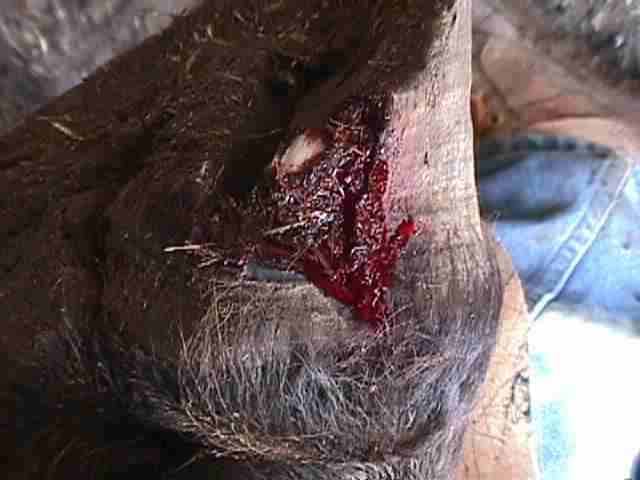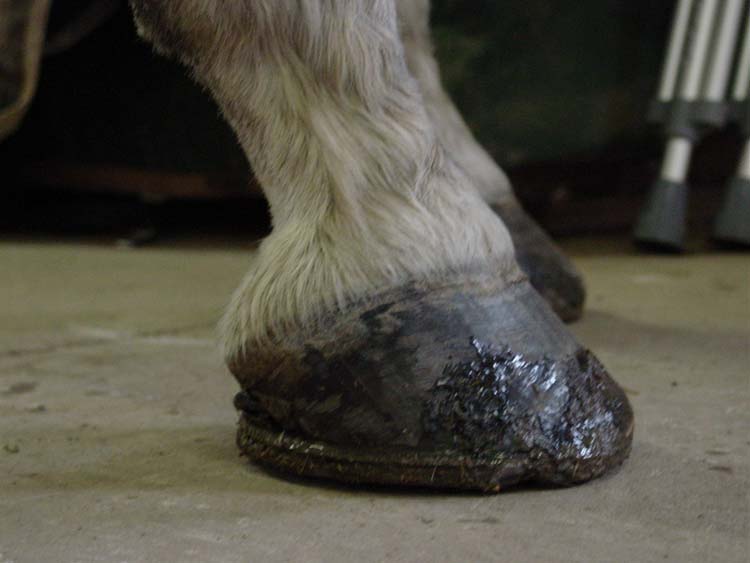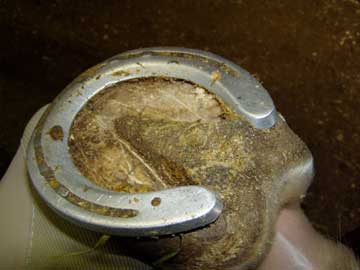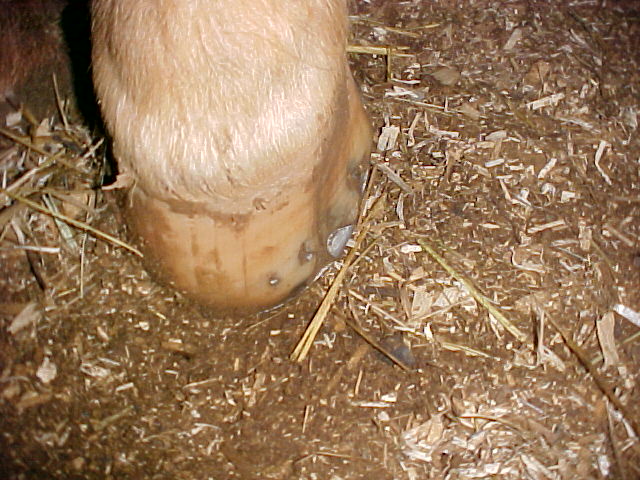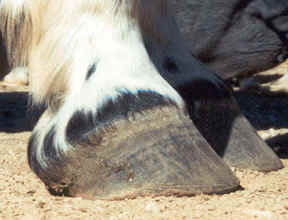Geezz guys…I do some work for a few days and you let this thread grind to a hault!  Well, lets get back on track and get things “a movin’ and a shakin’”
Well, lets get back on track and get things “a movin’ and a shakin’” 
<BLOCKQUOTE class=“ip-ubbcode-quote”><font size="-1">quote:</font><HR>Originally posted by Hilary:
slb - when you say pressure points under the pour-ins, do you mean they can create them, or just compress something that is already going on in there, and doesn’t show up b/c there isn’t anything compressing from the outside.
So when you say you need to relieve them, do you make a hole in the pour-in, or a divot in the sole?<HR></BLOCKQUOTE>
No, the pour-ins don’t normally create the pressure. It is that the spacial orientation of the coffin bone is generally not correct, therefore there already is internal pressure that needs to be considered. Without considering this, corium/solar burising can occur. The best way to test for this is to apply hoof testers and then remove or thin the area where the pressure points are revealed. Generally, this is in the area in front of the apex of the frog to the toe.
Making a divot in the sole would generate more problems because the sole is already compressed at those points, so further thinning would result in weakening it and probably more pain.
<BLOCKQUOTE class=“ip-ubbcode-quote”><font size="-1">quote:</font><HR>I’m excited to see if they help. Do you recommend equi-build/equipak? One thing the farrier is very concerned about is the “quality of life” for the sole when pads of any kind are used - she dislikes not being able to see it and mentioned there are clear products. I can’t really imagine that being able to see through a pad would really be of much benefit - it can’t be crystal clear, but want to assure her that all will be OK.<HR></BLOCKQUOTE>
I must confess, I am not very up on all the pads, buid-ups, wedges, or even pour-ins. My main focus is in understanding hoof form and function and how best to trim to attain it. Shoeing doesn’t interest me much and I don’t have much more than a basic understanding of application…I can tell you if it looks like it is shod correctly, but I can’t really tell you how to apply these things to attain a goal.
If you read www.hopeforsoundness.com info on their application of dental impression material, I think that will give some insight…but I am not sure if they comment on trimming out the pressure spots in the download…it is in the video. Check under tech support/downloads/EDSS impression material app.
I agree with your farrier, the quality of life for the sole is very important. But, equally important is the support of the coffin bone and frog pressure to encourage correct mechanisim and improve circulation in the foot. I also agree with you that I don’t really think that there is any material “clear” enough to really see what’s going on underneath.
Hope I answered all your questions…if not, just ask again. 
Proud member of the * Hoof Fetish Clique *
![]()



